
 It's incredibly hard to keep things private in the new digital age. There are far too many stories circulating about people who talked to a friend on the phone or texted about something and almost instantly got hit with ads for the subject of the conversation. And that happens without malware - no telling what information you're giving out if your devices have been infected with malicious software that is spying on you. more
It's incredibly hard to keep things private in the new digital age. There are far too many stories circulating about people who talked to a friend on the phone or texted about something and almost instantly got hit with ads for the subject of the conversation. And that happens without malware - no telling what information you're giving out if your devices have been infected with malicious software that is spying on you. more
 I've read several articles coming out of the Mobile World Congress trade show in Barcelona, Spain, and one of the common threads is that there was a lot of talk about 5.5G (or 5G Advanced) - the next iteration of 5G. My first question on reading about this was to ask what new features are being discussed that were not part of the original announced promises of 5G. I went back and read a few of my blogs and other articles that were written when 5G was first announced. more
I've read several articles coming out of the Mobile World Congress trade show in Barcelona, Spain, and one of the common threads is that there was a lot of talk about 5.5G (or 5G Advanced) - the next iteration of 5G. My first question on reading about this was to ask what new features are being discussed that were not part of the original announced promises of 5G. I went back and read a few of my blogs and other articles that were written when 5G was first announced. more
 In his January 12 SpaceX update, Elon Musk said the biggest goal for Starlink from a technical standpoint is to get the mean latency below 20 ms. He expanded by saying that given the speed of light, 8 ms is the absolute minimum latency for a satellite at 550 km. He believes they can optimize terrestrial and inter-satellite links, and minimize queueing delays and dropped packets, to recude the the rest of the time to below 10 ms. more
In his January 12 SpaceX update, Elon Musk said the biggest goal for Starlink from a technical standpoint is to get the mean latency below 20 ms. He expanded by saying that given the speed of light, 8 ms is the absolute minimum latency for a satellite at 550 km. He believes they can optimize terrestrial and inter-satellite links, and minimize queueing delays and dropped packets, to recude the the rest of the time to below 10 ms. more
 As was the case in the US during World War II, civilian volunteers are making important contributions to the Ukrainian war effort. On February 8, 2022, the first truckload of Starlink terminals arrived in Kyiv. A week later they were being used. By April 2022, there were 5,000 terminals in Ukraine, and 42,000 as of April 2023. (At this point, SpaceX and Ukraine have gone silent. Neither ChatGPT4, Gemini, Copilot, Perplexity, nor I could not find a current terminal count). more
As was the case in the US during World War II, civilian volunteers are making important contributions to the Ukrainian war effort. On February 8, 2022, the first truckload of Starlink terminals arrived in Kyiv. A week later they were being used. By April 2022, there were 5,000 terminals in Ukraine, and 42,000 as of April 2023. (At this point, SpaceX and Ukraine have gone silent. Neither ChatGPT4, Gemini, Copilot, Perplexity, nor I could not find a current terminal count). more
 Satellites make it possible for governments to provide essential services, such as national defense, navigation, and weather forecasting. Private ventures use satellites to offer highly desired services that include video program distribution, telecommunications, and Internet access. The Russian launch of a satellite, with nuclear power and the likely ability to disable satellites, underscores how satellites are quite vulnerable to both natural and manmade ruin. more
Satellites make it possible for governments to provide essential services, such as national defense, navigation, and weather forecasting. Private ventures use satellites to offer highly desired services that include video program distribution, telecommunications, and Internet access. The Russian launch of a satellite, with nuclear power and the likely ability to disable satellites, underscores how satellites are quite vulnerable to both natural and manmade ruin. more
 In the February 13th edition of the Wall Street Journal, Professor Thomas W. Hazlett offers a breathless endorsement of market concentration with the T-Mobile acquisition of Sprint, his go-to example. Apparently, mergers and acquisitions benefit consumers because they enhance competition and generate all sorts of positive outcomes that could not possibly have occurred but for the reduction in the number of industry players. more
In the February 13th edition of the Wall Street Journal, Professor Thomas W. Hazlett offers a breathless endorsement of market concentration with the T-Mobile acquisition of Sprint, his go-to example. Apparently, mergers and acquisitions benefit consumers because they enhance competition and generate all sorts of positive outcomes that could not possibly have occurred but for the reduction in the number of industry players. more
 I work with a lot of ISPs that own rural fiber. Some rural network owners have been successful in providing fiber to cell sites near their networks over the last decade. A few sell directly to a cellular carrier, but most of these connections are sold to an intermediate carrier that bundles together cellular connections across a large geographic area. more
I work with a lot of ISPs that own rural fiber. Some rural network owners have been successful in providing fiber to cell sites near their networks over the last decade. A few sell directly to a cellular carrier, but most of these connections are sold to an intermediate carrier that bundles together cellular connections across a large geographic area. more
 In 2019, I wrote that Amazon would be a formidable satellite-ISP competitor. I still think so, but I didn't expect it would be over four years until they launched the first test satellites. In the meantime, SpaceX has put over 5,000 satellites in orbit and has over two million Starlink customers. Amazon has permission to launch 3,236 satellites. more
In 2019, I wrote that Amazon would be a formidable satellite-ISP competitor. I still think so, but I didn't expect it would be over four years until they launched the first test satellites. In the meantime, SpaceX has put over 5,000 satellites in orbit and has over two million Starlink customers. Amazon has permission to launch 3,236 satellites. more
 Ookla recently published a blog that looks at the speed performance of satellite broadband, focusing mostly on Starlink. I haven't looked at this broadband sector for a while and thought it was time for an update. Starlink has had a busy year. At the end of November, the company had 5,500 satellites in orbit, up from over 3,200 at the end of 2022. The first constellation is still slated to reach almost 12,000 satellites, and the company has tentative permission from the FCC to extend to 42,000. more
Ookla recently published a blog that looks at the speed performance of satellite broadband, focusing mostly on Starlink. I haven't looked at this broadband sector for a while and thought it was time for an update. Starlink has had a busy year. At the end of November, the company had 5,500 satellites in orbit, up from over 3,200 at the end of 2022. The first constellation is still slated to reach almost 12,000 satellites, and the company has tentative permission from the FCC to extend to 42,000. more
 You may recall a number of years ago when Google experimented with delivering broadband from balloons in an effort labeled Project Loon. The project was eventually dropped, but a remnant of the project has now resurfaced as Taara - broadband delivered terrestrially by lasers. more
You may recall a number of years ago when Google experimented with delivering broadband from balloons in an effort labeled Project Loon. The project was eventually dropped, but a remnant of the project has now resurfaced as Taara - broadband delivered terrestrially by lasers. more
 SpaceX is equipping its new satellites with inter-satellite laser links (ISLLs). They now have over 8,000 optical terminals in orbit (3 per satellite) and they communicate at up to 100 Gbps. The other low-Earth orbit Internet service providers will follow SpaceX's lead. more
SpaceX is equipping its new satellites with inter-satellite laser links (ISLLs). They now have over 8,000 optical terminals in orbit (3 per satellite) and they communicate at up to 100 Gbps. The other low-Earth orbit Internet service providers will follow SpaceX's lead. more
 Starlink recently launched a new webpage that advertises the future ability to deliver text, voice, and data to 4G cell phones via satellite. The texting service is supposed to be available in 2024, with voice and data coming in 2025. The service will require a user to have a view of the open sky. more
Starlink recently launched a new webpage that advertises the future ability to deliver text, voice, and data to 4G cell phones via satellite. The texting service is supposed to be available in 2024, with voice and data coming in 2025. The service will require a user to have a view of the open sky. more
 A recent invitation to participate in a webinar to discuss ICANN's Role in Satellite Internet Governance as an enabler of UN Sustainable Development Goal (SDG) 9 prompted me to consider this issue. As a legal scholar with expertise in telecommunications infrastructure, I had much to say and discuss about the new mega-constellation phenomenon and its potential role in achieving SDG9, which, for me, is a multifaceted and fascinating subject. more
A recent invitation to participate in a webinar to discuss ICANN's Role in Satellite Internet Governance as an enabler of UN Sustainable Development Goal (SDG) 9 prompted me to consider this issue. As a legal scholar with expertise in telecommunications infrastructure, I had much to say and discuss about the new mega-constellation phenomenon and its potential role in achieving SDG9, which, for me, is a multifaceted and fascinating subject. more
 Starlink gets almost all of the satellite press in the U.S., which is fair since the company now serves many homes and RVs with broadband. The company currently has over 4,600 active satellites in orbit, and if it sticks with its original business plan, it will eventually have 30,000. But there are a few other satellite companies working in the broadband space that don't get the press. more
Starlink gets almost all of the satellite press in the U.S., which is fair since the company now serves many homes and RVs with broadband. The company currently has over 4,600 active satellites in orbit, and if it sticks with its original business plan, it will eventually have 30,000. But there are a few other satellite companies working in the broadband space that don't get the press. more
 AT&T and Comcast recently joined forces and joined the 5G Open Innovation Lab. This is a venture that has been funding start-ups and others working in 5G research. Along with looking to improve 5G edge technology, a primary goal of the OAI Lab is to search for killer apps for 5G. The two big companies join the other founding members of the effort, which includes Dell, Intel, Microsoft, Deloitte, and Nokia. more
AT&T and Comcast recently joined forces and joined the 5G Open Innovation Lab. This is a venture that has been funding start-ups and others working in 5G research. Along with looking to improve 5G edge technology, a primary goal of the OAI Lab is to search for killer apps for 5G. The two big companies join the other founding members of the effort, which includes Dell, Intel, Microsoft, Deloitte, and Nokia. more
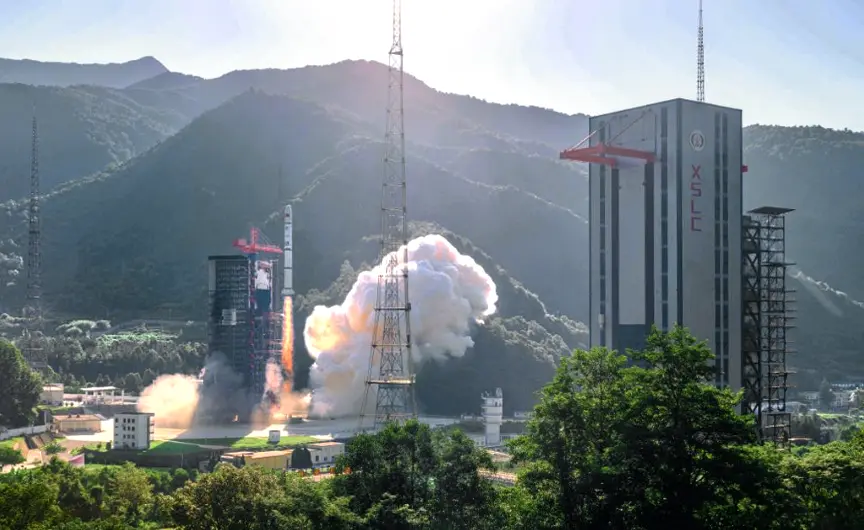 China’s Satellite Internet Ambitions: A Quest to Rival SpaceX
China’s Satellite Internet Ambitions: A Quest to Rival SpaceX SpaceX Launches Starlink Satellites for Global Cellular Coverage
SpaceX Launches Starlink Satellites for Global Cellular Coverage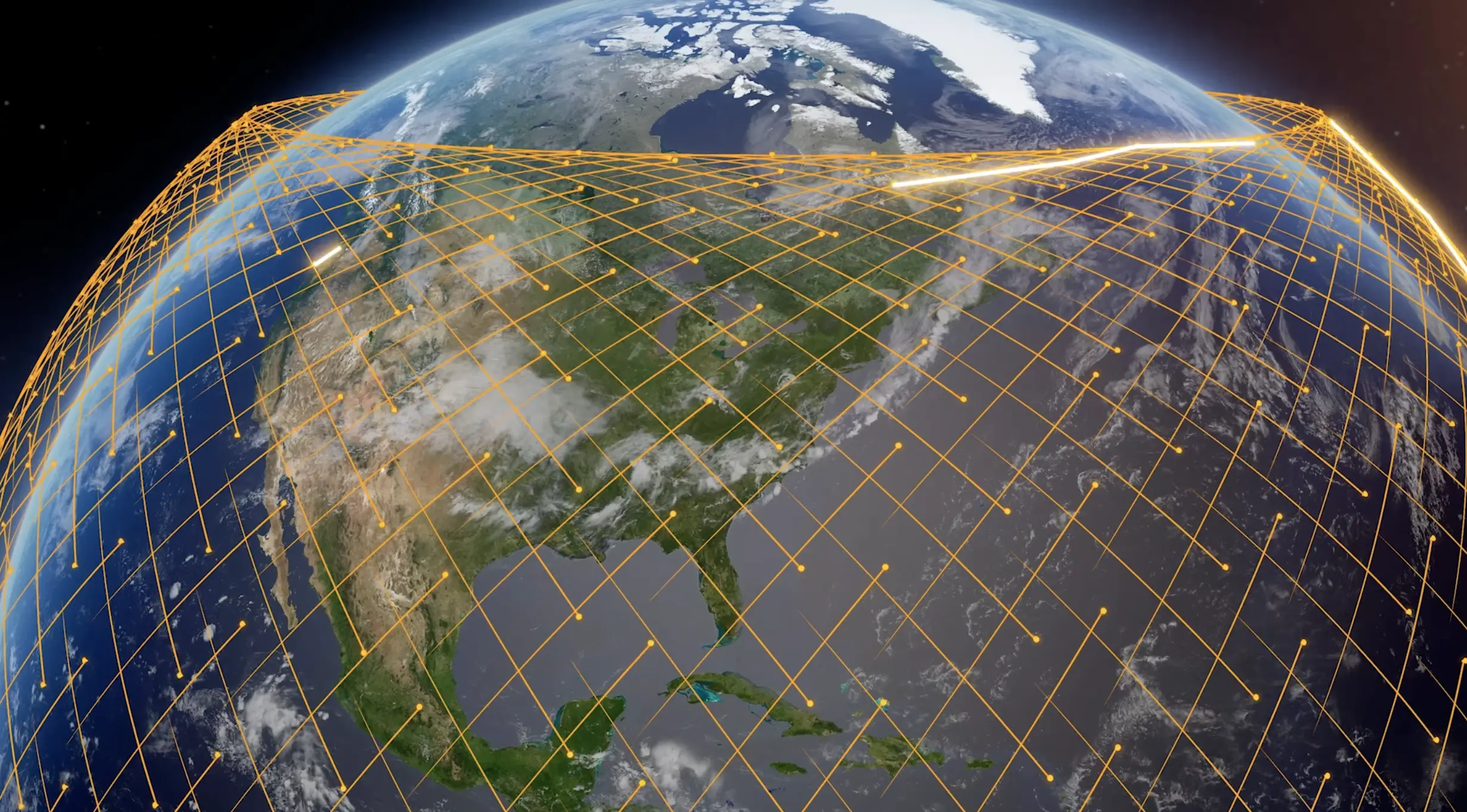 Amazon’s Project Kuiper Successfully Tests Laser-Based Satellite Communication
Amazon’s Project Kuiper Successfully Tests Laser-Based Satellite Communication SpaceX Quietly Launches New Website for Cellular Starlink Service
SpaceX Quietly Launches New Website for Cellular Starlink Service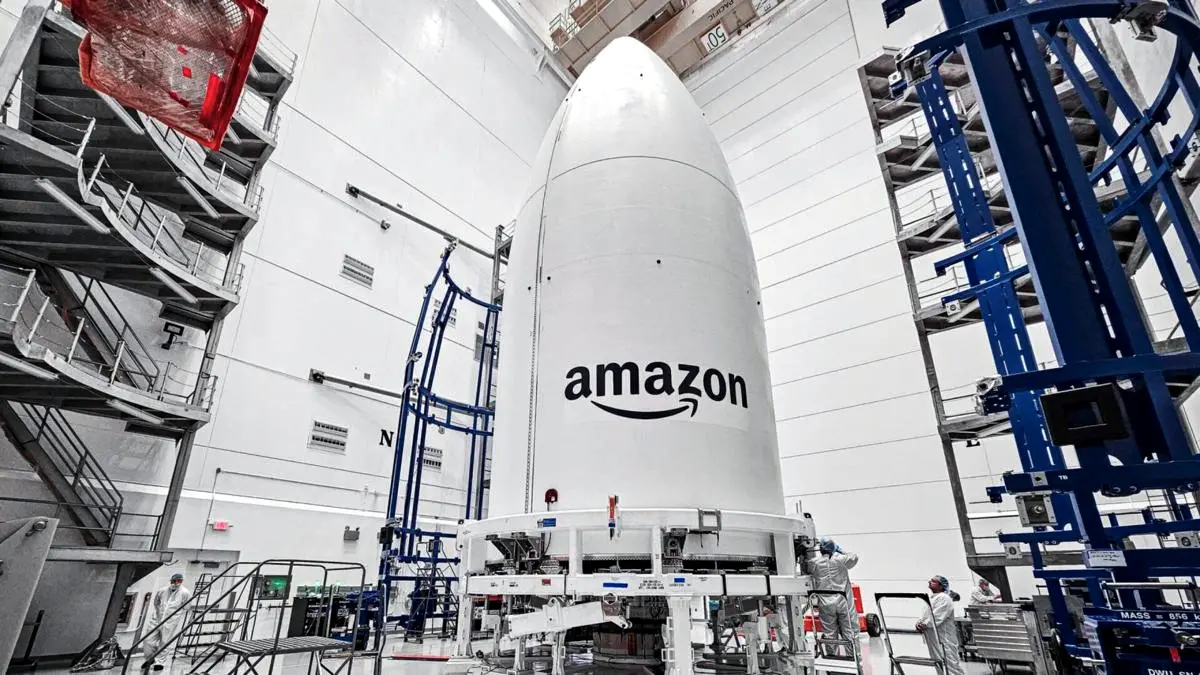 Amazon Launched Its First Two Internet Satellites Into Orbit
Amazon Launched Its First Two Internet Satellites Into Orbit Ukraine’s Increasing Dependence on Starlink Sparks Concern Over Musk’s Unilateral Control
Ukraine’s Increasing Dependence on Starlink Sparks Concern Over Musk’s Unilateral Control SpaceX Set to Launch Jupiter 3, the World’s Largest Commercial Communications Satellite, on Falcon Heavy Rocket
SpaceX Set to Launch Jupiter 3, the World’s Largest Commercial Communications Satellite, on Falcon Heavy Rocket Amazon Propels Into the Satellite Internet Race With New $120 Million Florida Facility
Amazon Propels Into the Satellite Internet Race With New $120 Million Florida Facility IEEE Approves 802.11bb Standard, Boosting Global Adoption of Light-Based Li-Fi Communications
IEEE Approves 802.11bb Standard, Boosting Global Adoption of Light-Based Li-Fi Communications Scientists Transmit Terabits Per Second Through Air, May Replace Undersea Cables
Scientists Transmit Terabits Per Second Through Air, May Replace Undersea Cables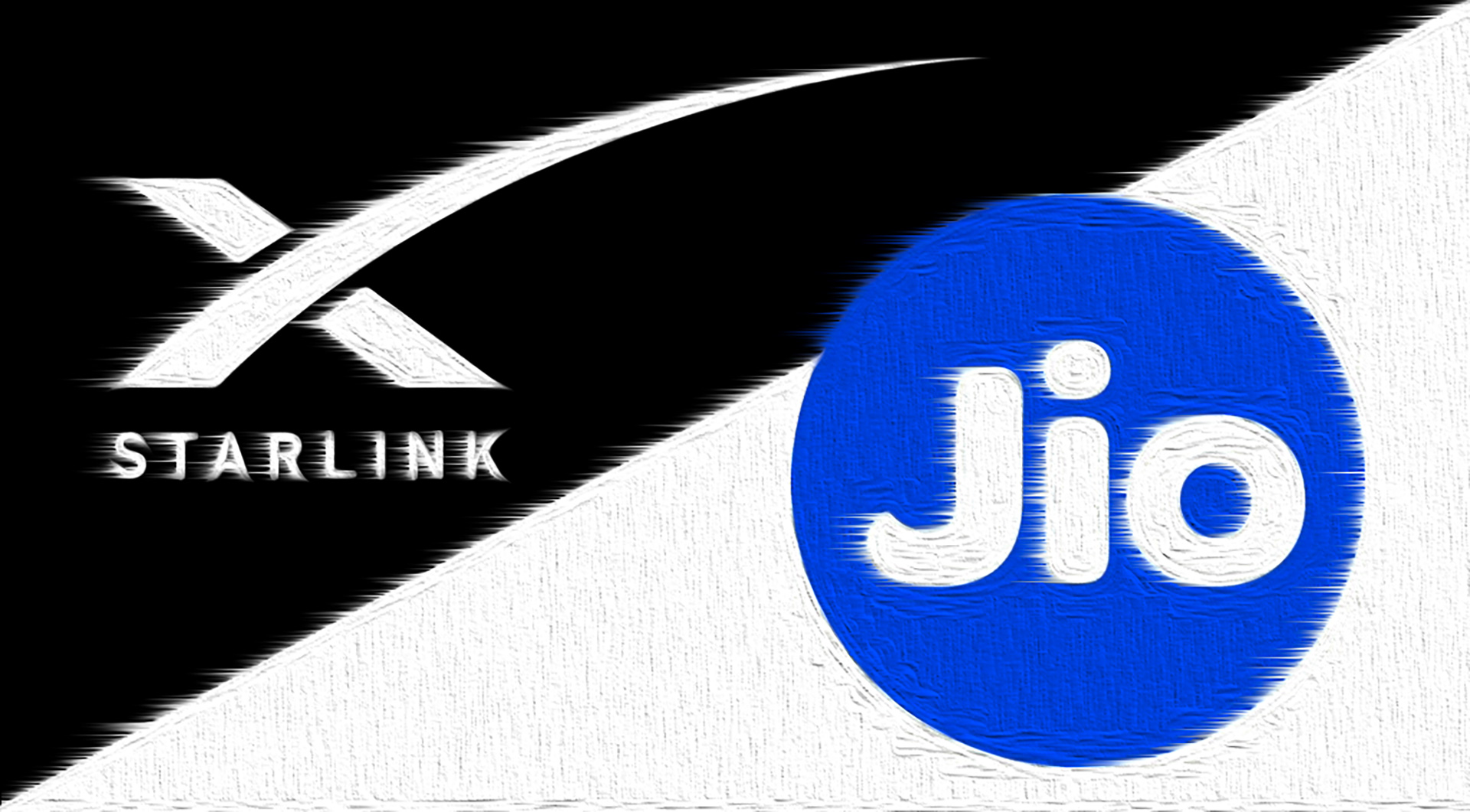 Satellite Spectrum Showdown: Musk’s Starlink vs. Ambani’s Reliance Jio in the Race for India’s Broadband Future
Satellite Spectrum Showdown: Musk’s Starlink vs. Ambani’s Reliance Jio in the Race for India’s Broadband Future Norwegian Cruise Line Joins the Fleet of Cruise Liners to Adopt Starlink Satellite Broadband Service
Norwegian Cruise Line Joins the Fleet of Cruise Liners to Adopt Starlink Satellite Broadband Service Amazon Announces Project Kuiper Customer Terminals with Speeds up to 1Gbps
Amazon Announces Project Kuiper Customer Terminals with Speeds up to 1Gbps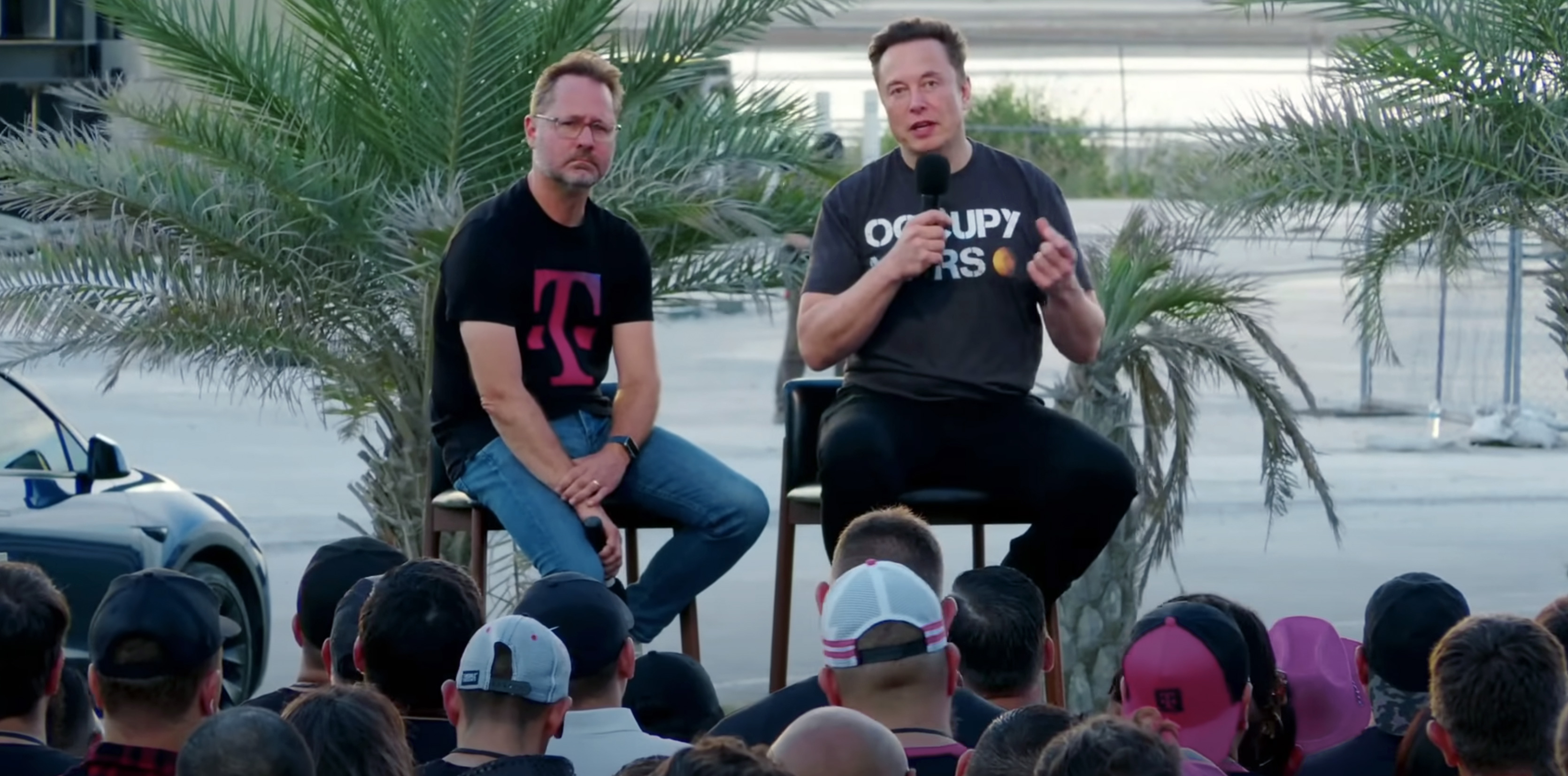 SpaceX and T-Mobile to Test Satellite-To-Cell Service This Year
SpaceX and T-Mobile to Test Satellite-To-Cell Service This Year